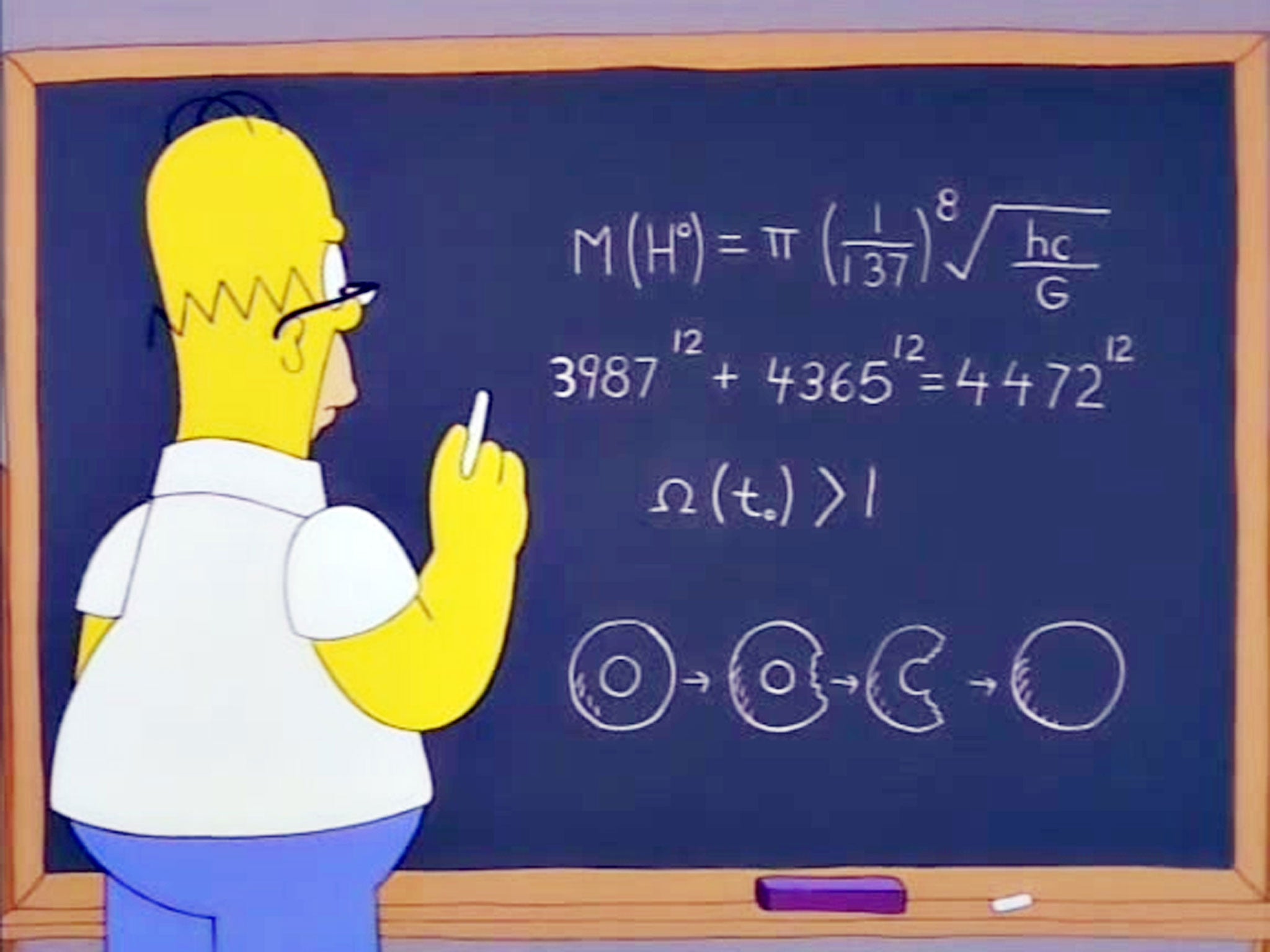How Homer Simpson discovered the Higgs boson over a decade before scientists
The author of 'The Simpsons and their Mathematical Secrets', says the programme is: 'the most mathematical show on prime-time television in history'

Your support helps us to tell the story
This election is still a dead heat, according to most polls. In a fight with such wafer-thin margins, we need reporters on the ground talking to the people Trump and Harris are courting. Your support allows us to keep sending journalists to the story.
The Independent is trusted by 27 million Americans from across the entire political spectrum every month. Unlike many other quality news outlets, we choose not to lock you out of our reporting and analysis with paywalls. But quality journalism must still be paid for.
Help us keep bring these critical stories to light. Your support makes all the difference.
Homer Simpson almost predicted the mass of the elementary particle, the Higgs boson, more than a decade before it was discovered, according to a new book on maths in The Simpsons.
In the episode “The Wizard of Evergreen Terrace”, aired in 1998, Homer becomes an inventor and is shown in front of a blackboard with a complicated equation.
“That equation predicts the mass of the Higgs boson” Simon Singh said. “If you work it out, you get the mass of a Higgs boson that’s only a bit larger than the nano-mass of a Higgs boson actually is. It’s kind of amazing as Homer makes this prediction 14 years before it was discovered.”
The Simpsons may “encourage and nourish” those who are into maths, Dr Singh said. He hoped teenagers who loved maths would feel inspired by the fact that the show’s creators shared their interests.
Subscribe to Independent Premium to bookmark this article
Want to bookmark your favourite articles and stories to read or reference later? Start your Independent Premium subscription today.
Join our commenting forum
Join thought-provoking conversations, follow other Independent readers and see their replies
Comments